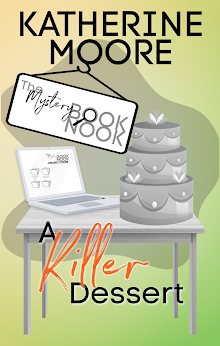TITLE: Three Steps to KOREATOWN BLUES
By Mark Rogers
“As usual, I was the only white guy in the place.”
I had the first line of my crime novel KOREATOWN BLUES. From
there the writing flowed; a series of 1,000 word days and a first draft in two
months. But it took several steps to get to that first line.
#1
First, there was a solo stint in a one-room sublet in LA’s
Koreatown that went on much longer than originally planned. The room had one
window that looked out on a brick wall close enough to touch. I could stand it
for a couple of nights at a time and then I’d have to escape. I took to going
to a Koreatown nightclub a few blocks away. As far as I could tell the club had
no name, just a plastic sign out front that said “Wine Beer.”
Inside, the Korean regulars welcomed me and yes, I was the
only white guy, which was usually the case the months I frequented the club.
They handed me a microphone within minutes of my sitting down at the bar and like
that I was singing a karaoke version of “Yesterday.” Much like my protagonist
Wes in Koreatown Blues, I began dropping in most nights for a couple of Hite
beers and to sing a few songs.
My nights drinking beer and singing karaoke led to a
one-sided romance with a Korean barmaid (I held up my side) and lots of glimpses
into Korean culture. This served me well when I was writing KOREATOWN BLUES,
while research filled in the missing bits.
Some wild things never made it into the novel, like the guy
who insisted on playing the drums on my head with his chopsticks, until I raised
my fist and called him outside; or the Korean who sang an impassioned version
of the love theme from Titanic, “I Will Go On” and then at song’s end pulled
out an envelope from inside his shirt: X-rays showing his inoperable lung
cancer.
#2
Another step that took me into writing KOREATOWN BLUES was a
simple exchange between two characters in Lights
in the Dusk, a film by Finnish director Aki Kaurismäki:
The heroine comes upon
the badly beaten hero: “What will you do?’
Blood trickles down
the edge of the hero’s mouth and his eye is bruised. He says, “I’ll open a
garage.”
She says, “It’s good
you haven’t lost hope.”
The words “car wash” (instead of garage) and “hope” became the
keys to my character, Wes, a young man who I describe as having no reverse
gear.
#3
The third and final step was years later, with Koreatown
long in my rearview. I was waiting for my wife outside a store as she shopped
for baby clothes. A thin rain began to fall and instead of going into the shop,
I took shelter under an awning. I took a notebook out of my pocket and in 30
minutes sketched out what would become KOREATOWN BLUES. In those few scribbled
pages I had my characters and my plot—all except the ending. Luckily that came
to me during the writing process, and the unusual solution to Wes’ plight may
be the most startling part of the story.
KOREATOWN BLUES is the
story of Wes—whose purchase of a car wash in LA's Koreatown comes complete with
a young Korean wife he's never met. Wes soon learns her five previous
husbands were murdered before the honeymoon and finds himself with ring on his
finger and a target on his back. Will he become the next victim of this
centuries-old blood feud—or will he emerge as the last husband standing?
KOREATOWN BLUES will be published by Brash Books, in February,
2017.
Bruce DeSilva, Edgar Award-winning author of the Liam
Mulligan crime novels, calls KOREATOWN BLUES "a cleverly-plotted
hard-boiled novel with crisp, muscular prose, a feverish pace, a vividly-drawn
urban setting, and characters so real that Rudy Giuliani would stop and frisk
them."







No comments:
Post a Comment